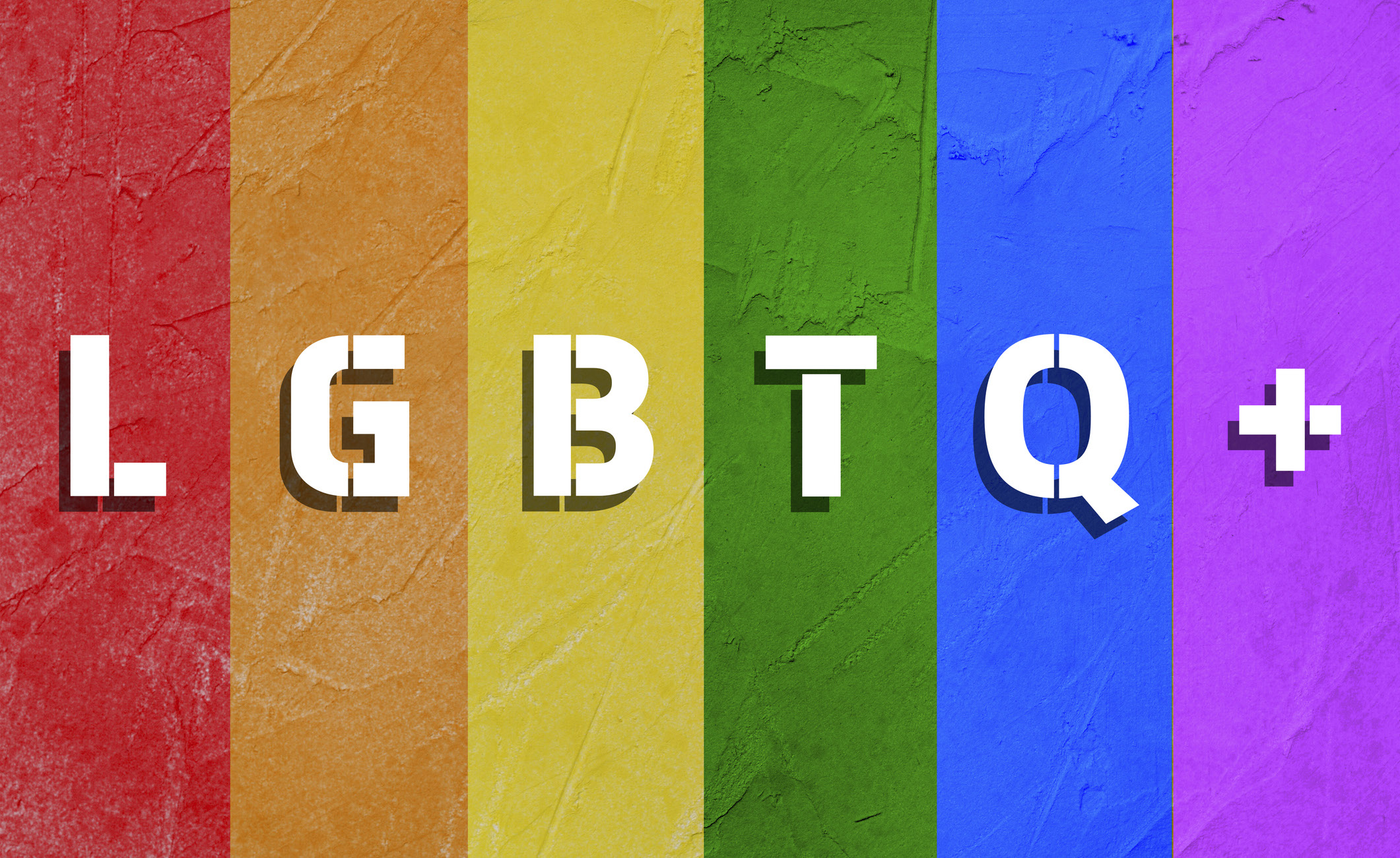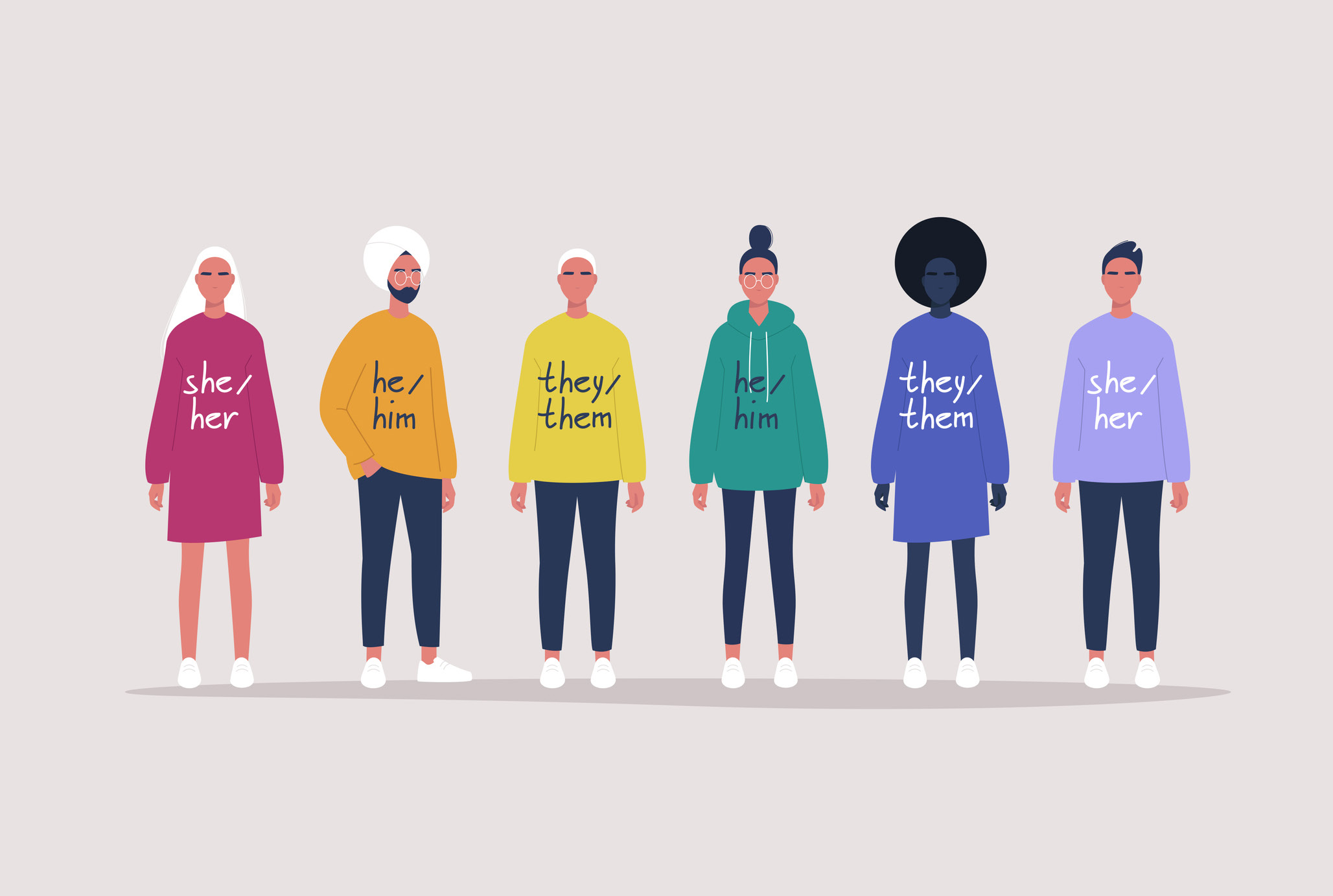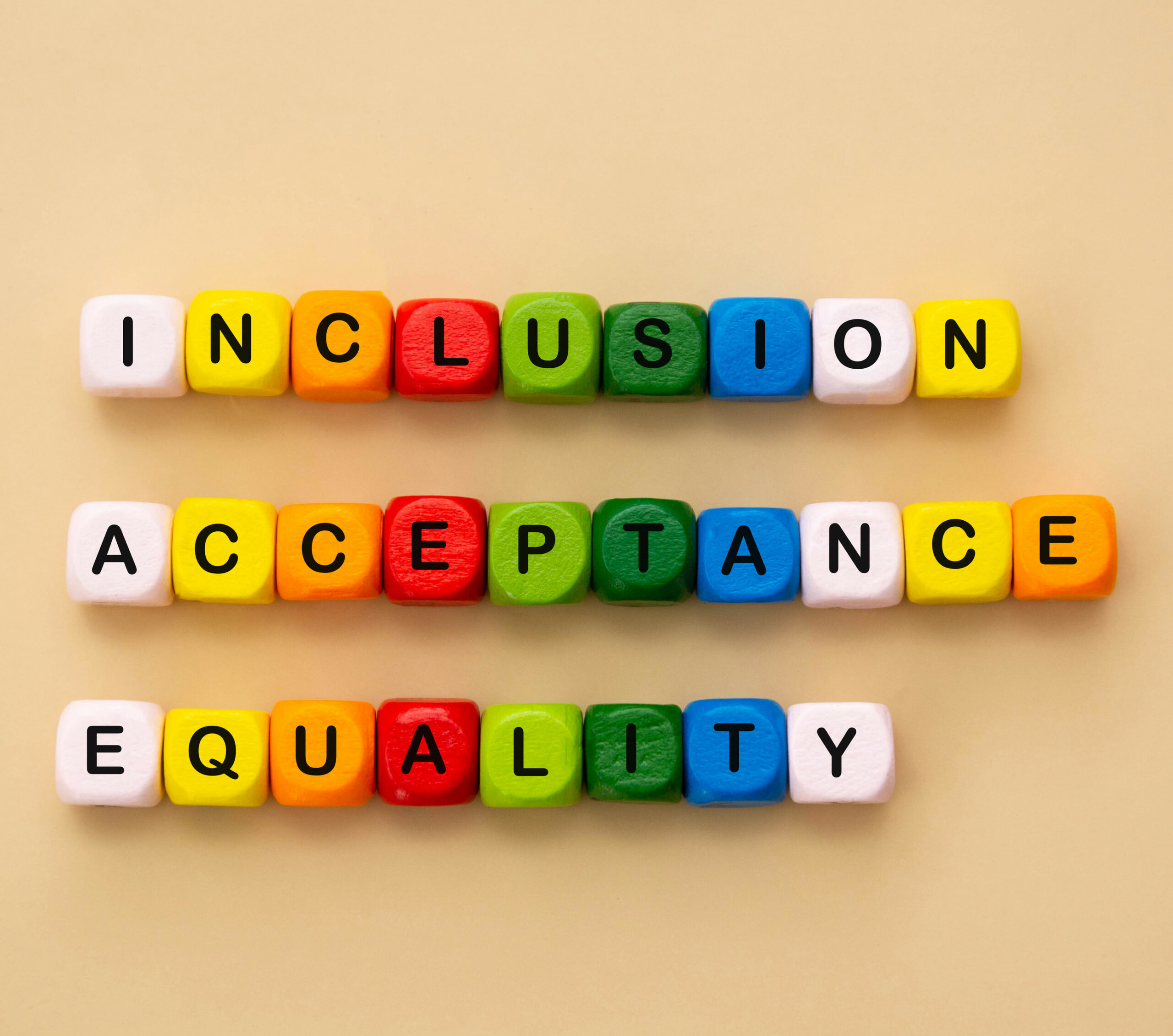Equity, equality, inclusion, diversity, safety, love, freedom, respect, humanity
It is a human right to feel safe, valued and included. And it’s a human need to feel loved, supported and to be able to express yourself.
We need to assure our children that they are valued and accepted for who they are, regardless of gender identity or sexual orientation.
What is the difference between sex, gender and gender identity?
While gender, sex and gender identity are intimately related, they are different.
According to the World Health Organisation, gender refers to the ways in which the conventions, social norms and behaviours of men, women, girls and boys are socially constructed, as well as the types of relationships we form. Gender is a social construct; it may be construed differently between different societies and may change over time.
Gender identity is typically developed very early in life. A person’s gender identity is deeply individual and refers to the way they feel or experience their own gender, how they present to others and how they want to be treated by others. This does not always correspond to the person’s designated sex at birth, nor to their physiology.

What does LGBTIQA+ mean?
LGBTIQA+ refers to people who identify as lesbian, gay, bisexual, trans, intersex, queer or asexual (or questioning). The ‘+’ reflects those who may identify as same or multigender attracted or gender diverse but who use a wide range of different identity terms. (Writing Themselves In 4 – The Health and Wellbeing of LGBTIQA+ Young People in Australia – the largest ever survey of LGBTIQA+ Young People in Australia and one of the largest in the world. (February 2021)
Why do we need to know about this?
Certain ideas around gender norms, particularly rigid expectations of masculinity, can impact all of us negatively. Pressures to look and behave in certain ways may encourage unhealthy behaviours. For example, evidence suggests boys and men are more likely to perpetuate and be victims of violence, engage in risk-taking behaviours and are less likely to monitor their physical health or seek help for mental health issues than women and girls (WHO 2022). These culminate in negative outcomes for boys and men, including higher suicide rates, being more likely to be injured or die in accidents, experience violence, and negative mental health outcomes.
It follows then that rigid gender norms have a particularly negative impact on those with diverse gender identities, who may face violence, discrimination and stigma in a variety of settings, including at school.
The statistics
A national survey of LGBTIQA+ young people revealed more than three-fifths of participants (60.2%) said they had felt unsafe or uncomfortable at school due to their sexuality or gender identity. Almost two thirds (63.7%) of those who attended secondary school were subjected to negative remarks regarding their sexuality or gender identity. Just over 15% experienced physical harassment based on their sexuality or gender identity. Shockingly, almost three-fifths (59.1%) of participants aged 16 to 17 years had experienced suicidal thoughts in the past 12 months, more than five times the proportion observed in the general population aged 16 to 17 (11.2%). (Writing Themselves In).
Overall, LGBTIQA+ students report higher levels of absenteeism, either not attending school or avoiding classes, leading to poorer educational outcomes. They have lower levels of employment. As a group, they experience poorer mental health and decreased wellbeing outcomes compared to the general population.
Creating safety
Settings which are safe, affirming and supportive of LGBTIQA+ young people have a positive impact on their mental health, sense of connection and general educational outcomes. We all play a part in providing this safe and supportive community.
For LGBTIQA+ students, feeling ‘safe’ might include:
- Having a sense of control and agency over themselves
- The way they choose to present themselves and their stories
- Having their identity validated and accepted, through the use of appropriate language, correct pronouns and being called by their preferred name
- Having the freedom to act in ways that correlate with their appearance, including the way they wear their school uniform.
Safety within their physical environment includes:
- Having access to toilets that reflect their preferred gender identity
- Private change rooms for sport
- Appropriate facilities when on school camps or other co-curricular activities.


Supporting LGBTIQA+ students in our community
Educate yourself
While many of us have grown up with certain ideas about what it means to be a man or woman, educating yourself and your family members about gender and gender identities is easy. At the end of this paper is a list of organisations that provide clear, relevant and up to date information. Listen to young people without judgement and affirm their experience.
Social connectivity to friends and family
Like all young people, LGBTIQA+ young people value social connection, and for the most part, want positive connections with their close friends and family. Having a supportive family is protective against mental health issues. Have strong anti-bullying and anti-discrimination policies and apply them It is illegal to discriminate or to allow discrimination and/or bullying in a school or workplace. Strong anti-bullying and anti-discrimination policies which are clearly communicated and, if needed, consistently enforced send an unequivocal message to the community that this type of behaviour will not be tolerated. Discrimination can be implied, for example, by insisting a person wears a uniform that does not accord with their gender identity.
Call out discriminatory language
As noted above, almost two thirds of LGBTIQA+ young people reported overhearing or being the target of negative, discriminatory language. Using gendered or discriminatory language, even when it is not directed at a particular person, for example, ‘this book is so gay’, or ‘you throw like a girl’ is offensive. Language is powerful and we can all call out language that is sexist, stigmatising, exclusionary or offensive.
Call people by their preferred names, use their preferred pronouns and avoid generalisations about gender
More than nine tenths (89%) of trans and gender diverse young people report being misgendered, which can be profoundly hurtful, even if it is inadvertent. Make the effort to get to know what people want to be called and use appropriate pronouns. This also includes using neutral language. The common salutation ‘Ladies and gentlemen’ for example, excludes nonbinary people, as do forms or surveys which only provide ‘Male’ or ‘Female ’categories.
Reflect LGBTIQA+ people and experiences
The experience of LGBTIQA+ people is often not reflected in school teaching materials and classes. Providing positive representations of LGBTIQA+ people in films or novels for study, or ensuring sex education is inclusive of all genders and sexual orientation go a long way to make school more welcoming. We cannot be who we cannot see.
Respect young people’s privacy
Young people should be able to decide how they choose to present themselves and what they want other people to know about them. It is important to remember that gender identity may be fluid and may change over time, so no one should be pressured into revealing information, or presenting in a certain way. Unless a person has ‘come out’ explicitly, we should avoid making assumptions about their gender or sexuality. Obviously, we should be very careful about confidentiality and disclosure, as well as being sensitive and appropriate in the questions we ask.
Ensure access to appropriate toilets and changing facilities
Many non-gender conforming young people report having nowhere to go to the toilet or get changed that accords with their gender identity. This may lead to young people restricting fluids, or withdrawing from sports or other co-curricular activities.
Be visible in your support
Including your preferred pronouns in your email signature lets young people know that you will also accept theirs.
she/her, he/him, they/them, he/they, she/they
- Wearing rainbow badges, lanyards and ribbons signals that you are an ally
- Putting up posters, banners and stickers expresses that LGBTIQA+ people are welcome and included.
These are small things that are easily done and are powerful tools which indicate that an effort has been made to create a safe and inclusive community.
Provide opportunities for LGBTIQA+ supportive groups and alliances
There is research that suggests that young LGBTIQA+ people who belong to a supportive group or alliance experience significantly increased positive feelings about themselves and their environment. Providing opportunities, space and time helps LGBTIQA+ young people feel supported, offers a sense of belonging and an opportunity to share experiences. Providing information about online support groups, webchats, and queer events may also be helpful.
Get involved!
There are many opportunities to support the LGBTIQA+ community such as Mardi Gras, Wear it Purple Day and Pride Month.
Resources
Headspace
https://www.headspace.org.au
To find your nearest centre or contact headspace, our phone and online service (12-25 years)
Lifeline
13 11 14
Minus 18
https://www.minus18.org.au
Online articles including: What to do when your child comes out, Busting 7 myths about being bisexual, What are pronouns and why are they important? How to be a Trans ally
QLife
1800 184 527
https://www.qlife.org.au/resources/chat
Queerspace
https://www.queerspace.org.au
Rainbow Door
https://www.rainbowdoor.org.au
Rainbow network
https://www.rainbownetwork.com.au
Safe Schools
https://www.vic.gov.au/safe-schools
Victorian Pride Centre
https://pridecentre.org.au
Located at 79/81 Fitzroy St, St Kilda, this is the first purpose-built centre for Australia’s LGBTIQ+ communities. It is home to vital health and community services.
References
Department of Education and Training Victoria (2020) LGBTIQ support policy. Retrieved from:
https://www2.education.vic.gov.au/pal/lgbtiq-student-support/policy
Headspace (2021) What is gender identity? Retrieved from:
https://headspace.org.au/assets/download-cards/09-Gender-Identity-headspace-fact-sheet-WEB-V4.pdf
Hill AO, Lyons A, Jones J, McGowan I, Carman M, Parsons M, Power J, Bourne A (2021) Writing Themselves In 4: The health and wellbeing of LGBTQA+ young people in Australia. National report, monograph series number 124. Melbourne: Australian Research Centre in Sex, Health and Society, La Trobe University. Retrieved from:
https://www.latrobe.edu.au/__data/assets/pdf_file/0010/1198945/Writing-Themselves-In-4-National-report.pdf
Mind Australia (2020), Self and safety resource for people identifying as LGBTIQA. Retrieved from:
https://www.mindaustralia.org.au/sites/default/files/Self_and_safety_resource_for_people_identifying_as_LGBTIQA%2B.pdf
Minus 18 (2022) How to challenge crappy language when you hear it. Retrieved from:
https://www.minus18.org.au/articles/how-to-challenge-crappy-language-when-you-hear-it
Minus 18 (2021) How to support and celebrate your LBGTQIA child, Retrieved from:
https://www.minus18.org.au/articles/love:-how-to-support-and-celebrate-your-lgbtqia+-childm
Rainbow Network (2022), A guide to coming out for parents, families and friends, Retrieved from:
https://www.rainbownetwork.com.au/resources
World Health Organisation (2020) Gender and Health. Retrieved from: https://ww.who.int/health-tocs/gender#tab=tab_1
Resources
The role of the parent during this time of change
What should you be focusing on?
Do you want to be part of our Staff Development Network?
Sign up to receive our newsletter
